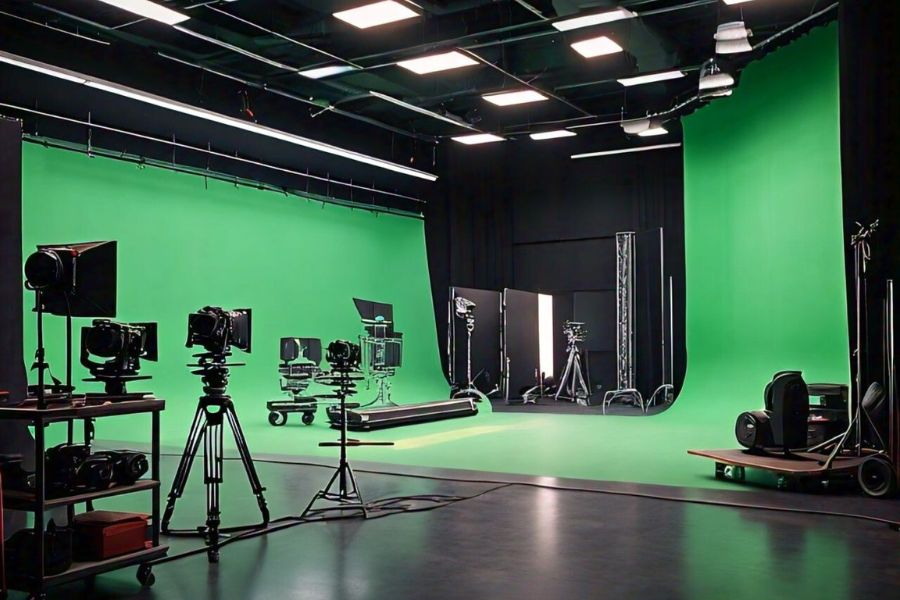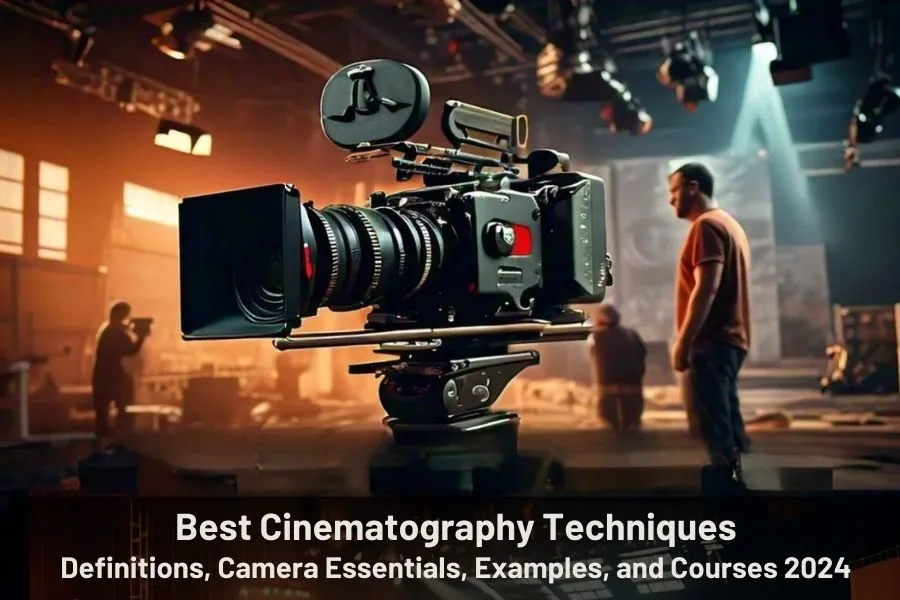Table of Contents
Introduction
Hey there! If you’re as passionate about movies as I am, you know that cinematography is the magic that brings stories to life on the big screen. It’s the art of capturing images that make you feel, think, and dream. Today, we’re diving into the world of Best Cinematography Techniques, Cinematography meaning and definition, Cinematography camera essentials, Cinematography examples, Movement in Cinematography, Composition Techniques, Color Theory in Cinematography and Cinematography courses to help you master this craft in 2024. I also offer both online and physical classes for those interested in honing their cinematography skills. In the event that you might want to find out more, go ahead and reach me!
Cinematography Meaning and Definition
So, what exactly is cinematography? At its core, cinematography is the art and science of capturing moving images on film or digital media. It’s about making visual choices that tell a story, convey emotions, and create an immersive experience for the audience.
Key Elements of Cinematography
- Lighting: How light is used to illuminate subjects and create mood.
- Composition: The arrangement of elements within the frame.
- Camera Movement: How the camera moves to follow action or create visual interest.
- Color: The use of color to enhance storytelling and evoke emotions.
Cinematography Camera Essentials

Choosing the right camera is crucial in cinematography. Let’s look at the different types of cameras and their significance.
Types of Cameras Used in Cinematography
- DSLR Cameras: Great for beginners, offering versatility and high-quality images.
- Mirrorless Cameras: Lightweight and compact, perfect for on-the-go shooting.
- Cinema Cameras: High-end cameras designed specifically for filmmaking, such as the RED and ARRI Alexa.
Importance of Camera Choice
Your camera choice impacts your film’s look and feel. It’s not just about the brand; it’s about what the camera can do to help you achieve your vision.
Basic Cinematography Techniques
Every great cinematographer starts with the basics. Here are a few foundational techniques:
1. Rule of Thirds
This technique involves dividing the frame into nine equal parts and placing important elements along these lines or their intersections. It creates a balanced and engaging composition.
Example: In the opening scene of “The Grand Budapest Hotel,” director Wes Anderson uses the rule of thirds to frame the grand Budapest Hotel itself, placing it right where the vertical and horizontal lines meet in the center, creating a sense of symmetry and grandeur.
2. Leading Lines
Using lines (like roads or buildings) to guide the viewer’s eye towards the main subject.
Example: In “The Lord of the Rings” trilogy, director Peter Jackson often uses long, winding roads as leading lines to draw the viewer’s eye towards the vast landscapes and emphasize the characters’ journeys.
3. Depth of Field
Controlling the focus to isolate subjects or create a sense of space.
Example: In “Citizen Kane,” director Orson Welles uses a shallow depth of field to keep close-up shots of Charles Foster Kane sharp while blurring the background, emphasizing Kane’s isolation and emotional distance.
Advanced Cinematography Techniques
Once you’ve mastered the basics, it’s time to get creative with advanced techniques:
1. Dolly Zoom
Also known as the Vertigo Effect, this involves zooming in while dollying out (or vice versa), creating a disorienting effect.
Example: The most famous example of the Dolly Zoom is from Alfred Hitchcock’s “Vertigo.” This technique was used to convey the character’s sense of dizziness and disorientation.
2. Steadicam Shots
Smooth, stable shots achieved with a Steadicam rig, often used for dynamic scenes.
Example: A well-known use of Steadicam shots is in Stanley Kubrick’s “The Shining,” particularly in the scenes where the camera follows the character Danny as he rides his tricycle through the Overlook Hotel.
3. Long Take
A single, continuous shot that can add intensity and realism to a scene.
Example: The opening scene of Orson Welles’ “Touch of Evil” is a classic example of a long take. This continuous shot sets up the entire narrative while building tension and anticipation.
Lighting Techniques in Cinematography
Lighting can make or break a scene. Here are some essential lighting techniques:
1. Three-Point Lighting
A classic technique using key light, fill light, and backlight to create balanced lighting.
Key Light: The main light source, illuminating the subject from the side or front.
Fill Light: Reduces shadows cast by the key light, often placed opposite the key light.
Backlight: Separates the subject from the background, creating depth.
Example: The beach scene in “Dunkirk” relies heavily on natural lighting to portray the harsh sunlight reflecting off the water and the vulnerability of the soldiers.
2. Natural Lighting
Using available light sources like the sun, often for a more realistic look.
Example: The opening scene of “The Royal Tenenbaums” features high-key lighting to showcase the characters’ quirky and eccentric personalities in a whimsical way.
3. High-Key and Low-Key Lighting
High-key lighting is bright and even, often used in comedies and commercials. Low-key lighting is darker and moodier, perfect for dramas and horror films.
Example: The interrogation scene in “The Silence of the Lambs” uses low-key lighting to heighten tension and obscure Clarice Starling’s surroundings, keeping the focus on her interaction with Hannibal Lecter.
Composition Techniques
Composition is about how you frame your shots. Here are a few key techniques:
1. Framing and Aspect Ratio
Choosing the right aspect ratio (like 16:9 or 4:3) and framing subjects to enhance the story.
Example: Imagine you’re photographing a lonely tree on a vast plain. Using a wide aspect ratio (like 16:9) emphasizes the emptiness surrounding the tree, highlighting its isolation.
2. Symmetry and Asymmetry
Using symmetry for balance and harmony, and asymmetry for tension and interest.
Example: A photo of a majestic building with its reflection perfectly mirrored in a still lake creates a sense of calmness and order.
Movement in Cinematography
Camera movement adds dynamism to your shots. Here’s a quick rundown:
Camera Movements
- Pan: Moving the camera horizontally.
- Tilt: Moving the camera vertically.
- Dolly: Moving the camera forward or backward.
- Zoom: Changing the focal length to zoom in or out.
Handheld vs. Stabilized Shots
Handheld shots add a raw, intimate feel, while stabilized shots are smooth and controlled.
Color Theory in Cinematography
Color can powerfully impact your film’s mood and tone:
1. Use of Color to Convey Emotion
Colors can evoke different emotions; for example, blue can feel calm or sad, while red can feel intense or passionate.
2. Color Grading and Correction
The process of adjusting colors in post-production to achieve a desired look.
Color Grading: This process involves adjusting the colors in post-production to achieve a specific look or mood. For instance, in “Mad Max: Fury Road“, the color grading is used to enhance the harsh, post-apocalyptic environment with high contrast and saturated colors.
Color Correction: This step ensures that the colors are consistent throughout the film, correcting any issues with lighting or color balance. In “The Matrix“, color correction is used to create the iconic green tint in scenes set inside the Matrix, giving it a distinct, artificial feel.
Cinematography Examples

Learning from the masters is always a good idea. Let’s look at some iconic scenes:
Iconic Scenes in Film History
- The Godfather (1972): The opening scene’s use of lighting and shadow.
- Blade Runner (1982): The stunning use of color and composition.
Analysis of Cinematography in Popular Movies
- Inception (2010): Complex camera movements and dreamlike visuals.
- Mad Max: Fury Road (2015): Dynamic action shots and vibrant color grading.
Cinematography Courses
If you’re looking to dive deeper into the world of cinematography, I offer a range of comprehensive courses designed to suit all skill levels. Whether you prefer learning in a classroom setting or from the comfort of your home, I’ve got you covered. My physical classes provide hands-on experience with professional equipment, while my online classes offer flexibility and convenience, complete with interactive lessons and personalized feedback. Interested in honing your cinematography skills? Contact me today to find the perfect course for you and start your journey towards mastering the art of visual storytelling.
Conclusion
In conclusion, mastering cinematography involves understanding its core elements, from the essential techniques like lighting, composition, and camera movement to advanced methods such as the dolly zoom and long take. The choice of camera and lighting techniques like three-point lighting and natural lighting significantly impact the film’s visual storytelling.
Color theory also plays a crucial role in conveying emotions and setting the tone of the film. By studying iconic scenes and learning from the greats, one can gain invaluable insights into effective cinematography. For those eager to enhance their skills, my comprehensive courses, available both online and physically, provide the perfect opportunity to delve deeper into this captivating craft. Contact me to embark on your journey toward becoming a proficient cinematographer in 2024.
FAQs
1. What is cinematography?
Cinematography is the art and science of capturing moving images on film or digital media. It involves making visual choices to tell stories, evoke emotions, and create an immersive experience for audiences.
2. What are the key elements of cinematography?
The key elements include:
- Lighting: Used to illuminate subjects and create mood.
- Composition: Arrangement of elements within the frame.
- Camera Movement: Techniques used to move the camera to follow action or create visual interest.
- Color: Utilization of color to enhance storytelling and evoke emotions.
3. What are some essential cinematography camera essentials?
Essential cameras include:
- DSLR Cameras: Versatile and good for beginners.
- Mirrorless Cameras: Lightweight and compact for mobile shooting.
- Cinema Cameras (e.g., RED, ARRI Alexa): High-end options designed specifically for filmmaking.
4. What are some basic cinematography techniques?
Basic techniques include:
- Rule of Thirds: Dividing the frame into thirds to create balanced compositions.
- Leading Lines: Using lines in the frame to guide the viewer’s eye towards the subject.
- Depth of Field: Controlling focus to isolate subjects or create spatial relationships.
5. What are some advanced cinematography techniques?
Advanced techniques include:
- Dolly Zoom (Vertigo Effect): Zooming while dollying to create a disorienting effect.
- Steadicam Shots: Smooth, stable shots achieved with a Steadicam rig.

